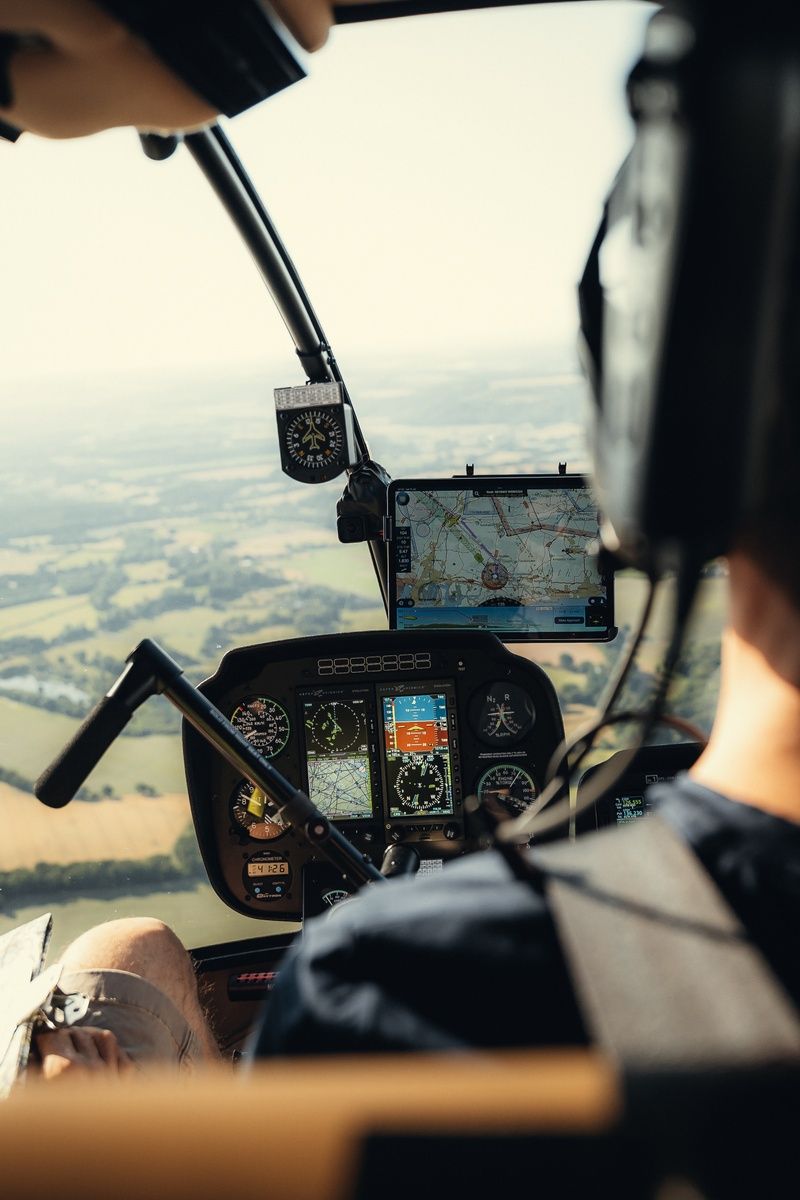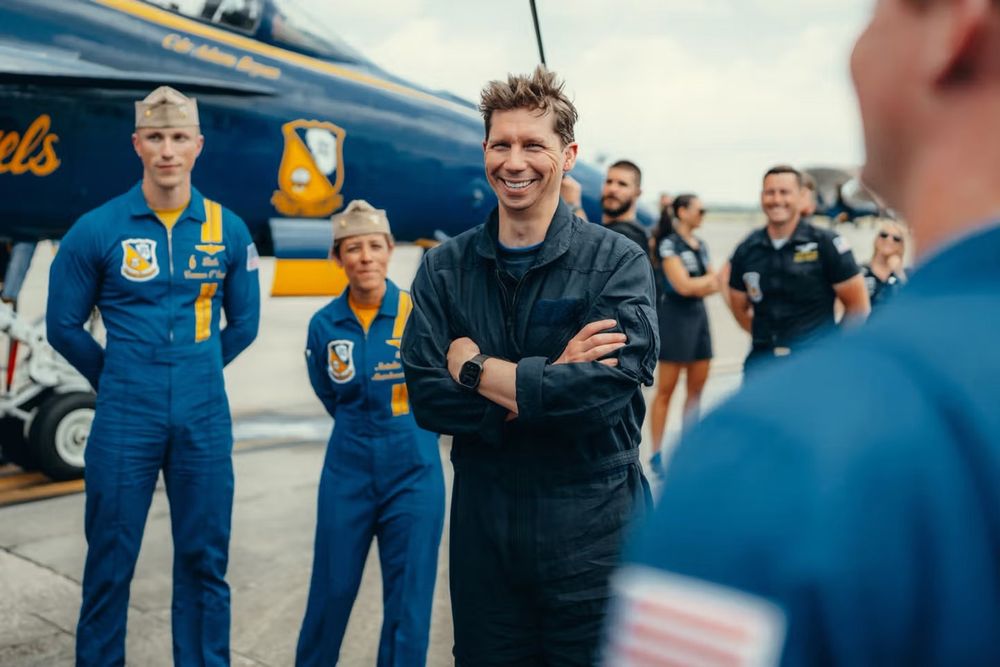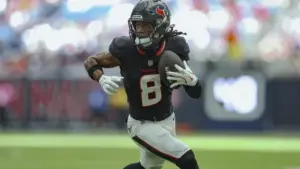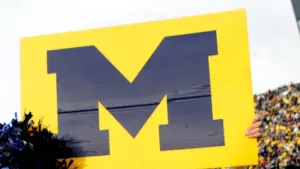When Williams team principal James Vowles and his wife Rachel took to their annual New Year’s tradition of setting themselves a challenge, the idea was to learn a new skill over the new year. Taking piano lessons, learning a new language; you get the idea.
But in 2020 Vowles set himself a slightly loftier target. Unbeknownst to his wife, the then Mercedes engineer embarked on secret helicopter flying lessons. “It took over a year, because we even went through the next new year’s process,” Vowles tells Motorsport.com. “Whenever I had time, I would be disappearing for half a day and effectively going to an airfield in High Wycombe and learning how to fly.
“In the end, I got through 56.5 hours of flight and 11 theoretical exams. As you imagine, it wasn’t easy to keep it secret for her the entire time, so when I thought she was getting suspicious I booked us to go on a London helicopter tour.
“The whole business – about 25 people – were completely in on this. I just casually picked up the briefing, they put me in the front because I have longer legs and then I asked if I could play around with a few switches. Then I fired up the helicopter and took off. I wish we had filmed Rachel’s reaction… The cloud ceiling was too low that day, so we just flew around the airfield, but I took her back up to London one week later. I think I broke our tradition with that one.”

James Vowles is qualified to fly a Robinson R-66 Turbine helicopter
Photo by: Williams
Naturally, Vowles didn’t suddenly wake up with the idea of flying helicopters, he rather acted on a lifelong passion for the skies.
“I wind it all the way back to when I was four or five and I had my first bicycle,” he reflects. “It represented freedom, you could suddenly go so much further and explore so much more. And aviation is an extension of that and you can see the world in a way that so few people get to see in a normal sense. Most people have taken a commercial flight, but that’s different to you choosing how you want to explore the world, and when you wake up in the morning and go do it. That’s what I enjoy about aviation, is that freedom to do something that is unique.
“When I was tiny, one of my dreams was to be an Air Force fighter jet pilot. I just enjoyed any vehicle that provided the speed. So, what has the most speed? Well, you might as well go over Mach 1 if you’re going to do it…”
How helicopters keep Vowles on his toes
But along the way Vowles’ interest gradually shifted from fixed-wing aircraft to helicopters, which don’t exactly provide the same speed fix as a high-performing jet, but a much more hands-on way of flying Vowles connected with.
Taking off in the Robinson R-66 Turbine he leases requires a hefty boot of rudder – or anti-torque pedal to be precise; helicopter-specific techniques for hovering and landing require a great deal of precision, whereas your typical general aviation planes are much more forgiving.

Photo by: Williams
The bubble-shaped glass canopy provides excellent visibility, helping Vowles attain that sense of freedom he craves. And having enjoyed plenty of experience racing GT cars as an amateur racer, he soon found parallels that sped up his learning process.
“I tried fixed-wing flying as well, but I didn’t find it interesting,” he explains. “If you just let go of the controls in a fixed-wing aircraft, it will stay there. What I wanted is the challenge of having no choice but to be in a state of flow controlling the aircraft. And that’s what a helicopter does. It keeps you on your toes, and it’s about micro-adjustments to a unit that you have to be completely connected to. So, in a sort of weird way it’s surprisingly like driving a race car.
“When you first hover, if you can stay within the airfield they treat that as good. The first hover I did was, I think, a maximum movement of three metres left and right. I’m pretty sure that anyone that drives a race car has what you need to fly a helicopter, because it’s very similar. You’re just in tune with what the movement of the helicopter is and the micro-adjustments you need to make. As far as I understand, it’s when your in-ear balance gets in tune with what you can do in sequence with your hands and feet.
“You’re just in tune with what the aircraft is doing and reacting to it the whole time. And I think that’s what I really enjoyed.”
Due to his busy life as an F1 team principal, with tons of commitments on top of a 24-race calendar, Vowles is flying nowhere near as much as he would like – “not often at all” – but he makes sure to stay current and take his yearly flying exams to retain his licence.
“I maintain my license every year, but probably only something like six to 10 hours a year,” he says. “I’d much rather do more, but because of where the helicopter I lease is based, by the time you get there, do your checks and start, it’s about four and a half hours. It’s not a sensible use of my time. In the period I started flying we’ve had two small children, so when I’m free my time should really be spent on my family.
“So, what I have been doing, for example, is getting a helicopter up to various places I need to go, like Goodwood, which is a good use of my time.”

James Vowles, Williams, flies a Robinson helicopter
Photo by: Williams
The annual check ride to maintain a helicopter licence includes practicing several techniques and lifesaving emergency procedures, the most crucial of which is a technique called autorotation. Perhaps contrary to popular belief, helicopters don’t simply fall out of the sky in case of an engine failure. While helicopters don’t have the benefit of wings to provide lift, by descending at a specific airspeed a pilot can keep the rotors spinning even without power to glide to a safe landing area.
That’s why the technique is a must for any pilot to become and stay qualified, but that doesn’t make practicing the emergency procedure any less unnerving. “What I enjoy about it is that helicopters should really screw themselves into the ground, and yet they don’t. They fly,” he says. “We have to get certified once a year, which is different to fixed-wing. And for good reason, as there’s a lot more to stay on top of. You have to be doing several autorotations a year, fully putting it to the ground.
“You do feel like you are crossing a bridge and your stomach gets a little bit lighter, because the helicopter is plummeting to the earth, but you’ve got a minute or so to control it and put it exactly where you want to. That’s one of the tests we go through, despite the fact that engine failures don’t happen.”
But Vowles doesn’t subscribe to the idea that helicopter flying is inherently dangerous. “That’s the first perception about it, but the reality is that it’s the pilot that causes most of the problems,” he points out. “However, I’ll nearly always have a second pilot with me, because frankly, why not? At the end of the day, if something happens to me the safety of others is far more important.”
The lessons F1 teams can learn from the Blue Angels
While eventually becoming a motorsport engineer rather than pursuing a career in the Royal Air Force, Vowles did see a childhood dream come true when ahead of May’s Miami Grand Prix, he and his driver Alex Albon were invited by the Blue Angels, the United States Navy’s famed demonstration squadron. Both Vowles and Albon were given the once-in-a-lifetime opportunity to conduct a full sortie with the team, flying in the back seat of two-seat F/A-18 Super Hornets.
Flying high-performance fighter jets in close formation – as close as 18 inches apart wingtip to wingtip – requires an enormous amount of training, coordination, accountability and teamwork. And inevitably, that intricate process tickled the brain of a perfectionist motorsport engineer and team principal leading a squad of 700 people to the top of Formula 1. The overlap between the two organisations is far-reaching.
“The first thing I took away from that was the level of detail on everything, even on items that I didn’t think were relevant. And I’m a detail-oriented person!,” he chuckles. “How we exit the building, how you walk to the plane, when you salute from in the aircraft, when the canopies are closed – all at the same time.”

Super Hornets of the US Navy’s Blue Angels in diamond formation
Photo by: Williams
He adds: “Everything is about a world-class set of structures. Their accountability is world-class, the best I’ve ever seen. It’s not about blaming. It’s not about what you should have done differently. It’s: ‘Here’s what I did differently. I timed it wrong, it banked too hard, I moved out of your wake which caused someone else problems.’ Everything was about self-reflection to a very high level of detail. I think there’s a lot we in the world can learn from that.
“That, and I also think the Hornet is the best aircraft in the world!”
While Vowles may not be getting the amount of seat time he would like, he still has plenty of flying goals on his bucket list. Combining his passion with his young family might be tough right now, but one day he wants to show them the world from above.
“When there’s time and my family’s a little bit older, I want to use these skills to actually get us to fun places that we wouldn’t go to normally,’ he says. “I haven’t been to the Isle of Wight yet, or a lot of places in Scotland, and that’d be a really good way to do it.
“I think that’s really why I did this. To provide us the ability to go and explore the world.”

James Vowles, Williams Racing at the Blue Angels
Photo by: Williams
In this article
Be the first to know and subscribe for real-time news email updates on these topics
Subscribe to news alerts






